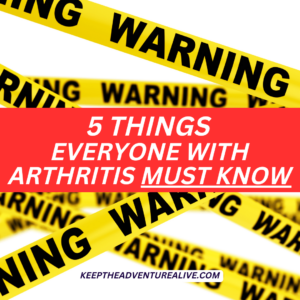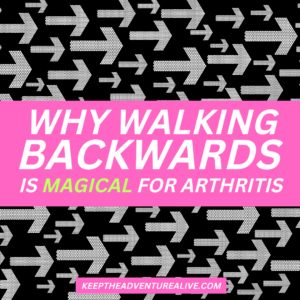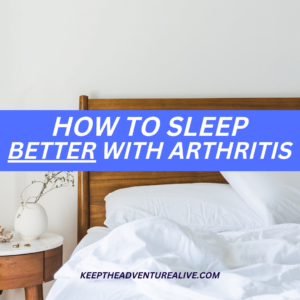A baker’s cyst behind the knee, also known as a popliteal cyst, is a fluid filled sac that forms that is commonly seen in those that have knee osteoarthritis. This is likely because with knee osteoarthritis there is a disturbance in the knee mechanics by the lack of muscular support which can cause an increase in production of fluid in the joint. This leads to a baker’s cyst which can lead to back of knee pain. These are rarely dangerous and likely more annoying than anything with pain and limited range of motion as typical side effects. Baker’s cysts behind the knees don’t typically require surgical intervention and likely can be treated with physical therapy, movement, heat or ice and other ways to reduce inflammation.
Have you ever noticed a small to medium sized bump behind your knee?
Have you experienced a recent change in back of knee pain?
Have you noticed that it is harder to straighten your knee recently?
Has the back of your knee been bothering you?
These can all be signs of a potential baker’s cyst, also called a popliteal cyst. Popliteal is another name for the back of your knee in case you were wondering! The term Baker’s Cyst came from British surgeon William Morant Baker.
What is it?
A Baker’s Cyst occurs when there is a build up on a joint fluid, also called synovial fluid that herniates out behind your knee. This sac then fills with fluid and a substance called “fibrin”. This fibrin blocks the fluid from returning to the knee, acting as a one-way valve. Thus, creates a gelatinous sac.
These cysts are rarely dangerous and don’t usually require surgery. Here are the top 5 things you need to know about a baker’s cyst behind the knee. Knowing these things will give you peace of mind knowing that you understand what to look for and when to take action.
Table of Contents
1. What causes a baker's cyst behind the knee?
There are a few different situations when it is common to see one of these fluid-filled sacs form behind your knee.
One explanation is that up to 50% of people have a valve opening in the joint capsule at the back of the knee. Fluid is able to flow into the sac but is unable to flow back into the knee which poses a problem.
You can also have one of these valves form from a previous injury or other condition. For example, according to the research…
As mentioned above, it is common to see a Baker’s Cyst form after a medial meniscal tear as it is usually accompanied by swelling of fluid and can create an opening for fluid to flow out of the joint.
It also has been heard of forming after a total knee replacement, likely indicating a failed procedure in some cases.
How the cyst fills
Essentially what happens is when you bend your knee, the fluid flows into the sac. When you extend or straighten it, the cyst gets compressed between two muscles in your calf and brings it closer to the surface. It also contributes to the stiffness when trying to straighten your knee.
Commonly a baker’s cyst behind the knee can fill and refill at certain times which is why it may bother you only at certain times.
2. What does it feel like?
This is helpful to know so you know what you are dealing with along with potential complications.
Common symptoms of a Baker’s or Popliteal Cyst include:
- palpable sac in the back of your knee
- stiffness and difficulty when straightening your leg
- swelling in the back of your knee
- back of knee pain
One of the ways to see if you may have one is to bend your knee, the mass should disappear. When you try to straighten your leg, the mass should reappear. This is called the Foucher Sign. If the mass stays no matter what position your knee is in, it may be a different diagnosis.
In some cases, the cyst could become inflamed and larger in shape. If you begin to experience calf swelling and/or pain, warmth, sharp pain in your knee, or “a sensation that feels like water running down the calf”, numbness or tingling it could be a sign of something more dangerous and further medical workup may be necessary. Without intervention, the cyst could rupture.
It is important to monitor your symptoms to avoid further complications. Watch the size of the baker’s cyst behind the knee to make sure it is not growing significantly.
3. What you should do about it
There are a couple of different options for treatment, but before deciding it is best to talk to a medical professional for personalized advice.
If the cyst is small enough, you may not notice any or have very minor limitations. In this situation, likely no intervention is necessary unless you are experiencing any of the symptoms listed above.
If you are experiencing back of knee pain, there may be other structures involved like your hamstrings or calf muscles. Seeking out guidance from a physical therapist could help address this knee pain behind your knee as it may not be entirely due to the cyst itself.
To prevent pain and range of motion deficits from getting worse, you can try these tips below:
- Working on mobility and flexibility will help to keep your range of motion for further deteriorating. Specific exercises will be described in the next section.
- Following an anti-inflammatory diet to keep inflammation and swelling levels down would be very helpful- here are some ideas!
- Ice could help to reduce the inflammation and pain
- Compression from a compression sleeve or ACE wrap can help to reduce swelling
If you start to experience more back of knee pain, significant loss of range of motion, or increasing stiffness, you have a few options:
- Aspiration (draining of the cyst) can help to reduce inflammation and can reduce the size of the cyst but the recurrence rate is likely high.
- Surgical options such as cyst decompression or meniscal repair can be helpful to reduce the severity of the cyst but risk of recurrence is still there.
There is a high risk for recurrence of the cyst with the different treatment options. There is a chance that the cyst may also go away on its own using the management tips above.
4. How to improve knee range of motion
Building a good relationship with movement can have significant benefits on those dealing with Baker’s Cysts behind the knee. There are certain movements that can help you to maintain range of motion in your knee and keep inflammation down.
There are 3 exercises to start with. The most important thing is to maintain the ability to straighten your leg. If you begin to lose range of motion you may notice limping, difficulty walking, or difficulty climbing stairs because one leg is technically shorter than the other.
Terminal knee extension is a great place to start for most. There may be some discomfort and that is normal. If you notice significant pain, if may not be the right exercise for you and that’s okay!
Knee bends and straight leg raise is an exercise will help keep your knee bending and straightening without increasing pain. The idea is to complete 10-15 reps of this exercise, trying to reach maximum bend and maximum extension without forcing the joint.
Supported squats can be helpful as a weight bearing exercise. Adding the support improves your form and decreases joint pain. When you stand up, attempt to straighten your legs as much as possible. The goal is to complete 10-15 reps bending and straightening your legs as much as possible.
5. Be active in the approach to knee arthritis
It is important to continue to stay active in your approach to knee osteoarthritis. It is common that Baker’s Cysts are accompanied with knee osteoarthritis complicating the risks of limited range of motion and knee pain. Taking control of your symptoms and being proactive can be help with pain and stiffness significantly.
Have you ever felt lost in where to start with trying to control your knee osteoarthritis? Do you feel bogged down because everyone is telling you something different?
Knee arthritis can be tricky and there is a lot of information out there to weed through, it can truly be overwhelming. Especially adding on a baker’s cyst behind the knee, it can make the process a little more complicated.
The goal is to find the best ways to move that help the knee feel good, primarily the back of the knee. Building strength can be incredibly powerful when it comes to supporting the knee joint.
Straightening your knee fully can improve your walking ability which is very important.
Alyssa Kuhn
Disclaimer: This post is for general informational purposes only. It should not be used to self-diagnose and it is not a substitute for a medical exam, cure, treatment, diagnosis, and prescription or recommendation. It does not create a doctor-patient relationship between Dr. Kuhn and you. You should not make any change in your health regimen or diet before first consulting a physician and obtaining a medical exam, diagnosis, and recommendation. Move Well Age Well, LLC and Dr. Alyssa Kuhn, PT, DPT are not liable or responsible for any advice, course of treatment, diagnosis or any conclusions drawn, services or product you obtain through this video or site.

If you are looking to regain your active life but are unsure where to start, join the revolutionary membership, Adventurers for Life. This is a step-by-step path that not only will help you find pain relief but will help you unlock adventure. You’ll get workouts, tests to pass to make sure you are on the right track, community events and MORE.




